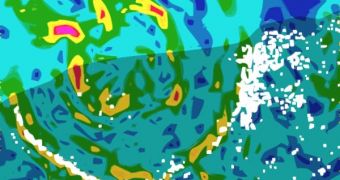Years ago, on the northern parts of the Yucatan Peninsula, in Mexico, investigators discovered a massive crater which they called Chicxulub. Widely believed to have been produced by the asteroid that killed the dinosaurs, the feature may also provide data on Martian climate changes.
According to the proposals set forth in a new study by NASA planetary ecologist Adriana Ocampo, it could be that the crater, even though concealed from view, may still hold tantalizing clues as to the nature of the climate changes that turned the Red Planet into an inhospitable desert.
Ocampo believes that Chicxulub may provide us with the necessary background to understand the largest crater in the solar system, a landscape feature on the surface of Mars that was produced when an object the size of Pluto impacted the planet.
The Chicxulub Crater was produced by a smaller, yet still-massive impactor some 65 million years ago. Though this issue is still hotly debated, many experts agree that the impact was one of the main reasons the K-T extinction event occurred, and the reason why dinosaurs disappeared.
“It's a natural laboratory because of its similarities to what we can find on other planets like Mars where humans can't go,” the NASA expert told Reuters about the Yucatan Peninsula landscape feature.
She explains that the Martian equivalent of Chicxulub is so large that it left nearly half of the Martian surface at a considerably lower elevation than the other. The crater's diameter has been established at around 5,300 miles (nearly 8,530 kilometers), Daily Galaxy reports.
By studying our own crater, it may be possible to determine how the atmosphere and natural cycles on the planet reacted to the devastating event 65 million years ago. By extrapolating these data to what we already know about the Martian atmosphere, it may be possible to use Chicxulub as a proxy.
The work is bound to be extremely complex and prone to errors, but it represents a promising avenue of research. As more and more data about the Red Planet become available, researchers will be able to refine these proxy models further, obtaining new insights into our neighboring planet's past.
According to data from NASA orbiters and rovers, it would appear that Mars once had flowing rivers, deltas and seas on its surface, all made of liquid water. But a massive climate change that occurred more than a billion years ago changed all that, freezing the planet over.

 14 DAY TRIAL //
14 DAY TRIAL //